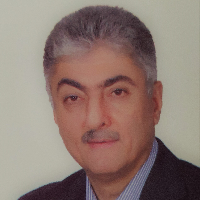Evaluation of the Requirements in Public Space for Elderly: A Case Study in Kholdebarin Park, Shiraz, Iran
Author(s):
Abstract:
According to the universal estimates، elderly population all over the world is increasing due to the reduced birth rate، improved sanitary condition and increased life expectancy، so that its growth rate has surpassed the population growth rate. Statistics in our country also explains the fact. Aging is a period of life where each person had to be faced. The increase in number of elderly people as a proportion of total world population makes it necessary to focus on the problem of aging and gerontology. This period has its own special conditions and characteristics. In this stage people encounter physical and psychological changes and problems. Limitations and special disability occurs in elderly people. This forces them to understand the physical environment in a manner differently from the younger ones. The World Health Organization (WHO) is the innovator of the age Friendly- Cities. It implies that a proper physical environment can promote functionality of elder people and their inability to reach the threshold. Urban spaces are places for social interaction، fun، leisure، and etc. Yet the elderly are the part of the social groups. Due to the age requirements and reduced relative business activities، they have much leisure time and are possible for them to use the urban spaces for optional and social activities much more than the other groups. Furthermore، parks are part of the urban open spaces that elderly people go very much. Research has shown that if the spaces are designed for the elderly، the other groups in the society can use them as well. This study was conducted to answer the following questions: 1- How can the society encourage the elderly to participate in urban spaces? 2- How to design and improve the urban spaces for elderly people? In this paper، after the literature review of the topic، some observation on urban space has been made in the area of Kholdebarin Park. The questionnaire forms were given to 120 users over 65 years of age and older. The results showed that the available urban spaces neither meet the needs of the elderly nor do they meet those of the healthy young people. According to the results of the questionnaires، a large number of users of the urban space belong to the group of young elderly who do not have a special problem or a disease which prevents them from using the urban spaces. The second group is those elderly who are older but can use the urban spaces which appropriate facilities are installed in them. This goes to show that if the proper changes are made in the urban spaces and they are made elderly-friendly، more senior citizens would be able to use them and be present in the social circles. According to the results، elderly people attend the urban spaces when they are sure that those spaces are responsive to their physical and psychological needs. Providing safety and security to the elderly in public spaces، municipal services and facilities and creating a sense of confidence and independence can increase motivation of using urban space among the senior citizens. However، design can’t solve the problem of the elderly by itself. The method of maintenance of spaces and effective urban management are very important as well. Based on the results of the questionnaires، the most important problems which elderly users frequently meet in public open spaces were found to be traffic and high speed، pollution، dirty streets and spaces، and inappropriate directions. Others also have pointed out problems such as lack of pedestrian bridges and green space، farness of the facilities and public accesses، inappropriate furniture، passing motorcycles، the existence juvenile delinquents and unemployed youth، senior citizens’ rights not being respected by others. This shows that the designers and urban management officials also play an important role in creating desirable urban spaces. Consequently، to achieve the appropriate space and environment for elderly، the following topics should be considered: 1. Accurately identifying the needs of the elderly and their problems in urban spaces; 2. Provideing design criteria for urban spaces proportionate to the needs of the elderly; 3. Establishing relevant organization to implement these criteria in urban space; 4. Accurate and comprehensive monitoring of the implementation of the relevant regulations; 5. Holding special training courses for people associated with professional design and space planning; 6. Creating college courses in inclusive design for the related fields; 7. Increasing Public awareness and education about the needs of the elderly people.
Keywords:
Language:
Persian
Published:
Journal of Architect, Urban Design & Urban Planning, Volume:5 Issue: 9, 2012
Page:
247
magiran.com/p1132401
دانلود و مطالعه متن این مقاله با یکی از روشهای زیر امکان پذیر است:
اشتراک شخصی
با عضویت و پرداخت آنلاین حق اشتراک یکساله به مبلغ 1,390,000ريال میتوانید 70 عنوان مطلب دانلود کنید!
اشتراک سازمانی
به کتابخانه دانشگاه یا محل کار خود پیشنهاد کنید تا اشتراک سازمانی این پایگاه را برای دسترسی نامحدود همه کاربران به متن مطالب تهیه نمایند!
توجه!
- حق عضویت دریافتی صرف حمایت از نشریات عضو و نگهداری، تکمیل و توسعه مگیران میشود.
- پرداخت حق اشتراک و دانلود مقالات اجازه بازنشر آن در سایر رسانههای چاپی و دیجیتال را به کاربر نمیدهد.
In order to view content subscription is required
Personal subscription
Subscribe magiran.com for 70 € euros via PayPal and download 70 articles during a year.
Organization subscription
Please contact us to subscribe your university or library for unlimited access!



